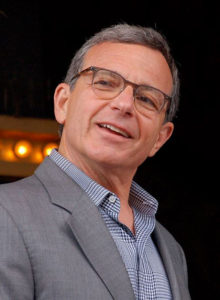Alcatraz: A Prison as Disneyland
The Alcatraz tourism site is the equivalent of using one of Stalin’s gulags as a prison-themed amusement park. It is a vehicle for peddling delusional myths about mass incarceration and the criminal justice system. Shutterstock
Shutterstock
SAN FRANCISCO — I took the ferry from Pier 33 on San Francisco’s Embarcadero to Alcatraz. I stepped onto the island from the gangway, walked up the hill to the old prison entrance and was given a portable audio guide. I spent two hours going through the corridors and cells where horrific suffering and trauma crushed human beings. Alcatraz purportedly had the highest insanity rate of any federal penitentiary of its era.
I was regaled through the headset with stories about famous Alcatraz inmates including Al Capone, Robert “Birdman” Stroud and George “Machine Gun” Kelly, escape attempts, the 1946 armed uprising that was ruthlessly put down by the Marine Corps, and intrepid FBI agents who hunted down the nation’s most notorious criminals and brought them to justice. In this binary, cartoon narrative of good guys and bad guys, of cops and gangsters, even the repugnant J. Edgar Hoover was resurrected as a virtuous symbol of law and order.
At the end of the tour — 5,000 people a day, some 1.4 million a year, visit the prison — we were funneled into the gift shop. It was possible to buy T-shirts, replica blue prisoner shirts, replica tin prison cups and other Alcatraz souvenirs. We were encouraged to take cards from a wooden rack and mail them to foreign governments on behalf of selected prisoners of conscience. The message was clear: In the United States those in prison deserve it; in foreign lands they are imprisoned unjustly. The Disneyfication of Alcatraz is the equivalent of turning one of Stalin’s gulags into a prison-themed amusement park. Prisons are institutionalized evil. And whitewashing evil is a moral monstrosity.
The Alcatraz narrative as presented by the National Park Service ignores the savagery and injustice of America’s system of mass incarceration, in which we today imprison 25 percent of all the world’s prisoners although Americans are only 5 percent of the global population. It ignores our decades-long use of torture, isolation and trauma to turn prisoners into psychological cripples. It ignores that most prisoners are poor and never had adequate legal defense. It ignores how people of color in our urban “internal colonies” are worth nothing on the streets but, in cages, each generates $40,000 to $50,000 a year for corporations. It ignores that prisoners are repeatedly punished and given longer sentences not for crimes they committed while free but for amorphous infractions such as “disrespect” and “agitation” done in prison. It ignores the prison system’s one-sided “justice” that denies prisoners a fair hearing. It ignores that a guard is God, that he or she can verbally and physically abuse a prisoner without repercussions. It ignores that prisons are despotic fiefdoms. It ignores the daily humiliation, despair and pain of those trapped inside. It ignores that prisoners who initially believe in the system, who think justice is possible, are usually the first to have psychological breakdowns or commit suicide. It ignores — and here is the greatest crime — the deep and profound humanity of many of the prisoners themselves, who are as caring, intelligent and loving as those outside the walls. It ignores, finally, who we are as a nation, how callous and brutal we are to the dispossessed and how we revel in stories of violence and human degradation. This excitement, and this fictitious narrative of good and evil, is possible only if we see prisoners as less than human. And this is a task perfected to an art at Alcatraz by the National Park Service, and by popular culture. Anyone who truly grasped what took place at Alcatraz, and what is taking place in prisons across the country, would weep.
I thought, as I stepped away from the gaggles of tourists and stood alone in an open cell, of the students I teach in prison. How would they have reacted? What would they have felt about the tourists who lapped up the stories of crime and retribution? What trauma and pain would they have experienced upon stepping once again into an isolation cell? My students think of themselves as slaves — under the 13th Amendment prisoners are forced to work for no pay or perhaps for as little as a dollar a day. They see prisons as replicating the power structure of plantations. And listening to the audio-guide stories would, for them, be like a former slave taking a tour of his or her old plantation while being fed tales of shiftless and lazy “Negroes” in the cotton fields and the gallantry of Southern whites. To anyone who has worked or been in a prison, the physical and psychological structure of Alcatraz — where there was no attempt at rehabilitation and usually a fifth of the population of about 250 was rotated in and out of isolation cells — is chillingly familiar. Prisoners as soon as they arrived at Alcatraz were forced to strip and stand naked before the guards. This ritual, repeated daily in prisons across the country, is primarily a rite of humiliation, a way to deny prisoners their dignity. Prisoners must be broken. Forcing prisoners to stand naked before the guards begins the process. Those who resisted authority in Alcatraz — and resisting authority often meant merely talking back to a guard — were thrown into isolation cells known as “the Hole.” This too is a contemporary experience.
In Alcatraz on the bottom tier of the three-tier D Block were four isolation cells. I walked into one. This is where men were locked for up to 19 days in total darkness, denied a bath and had no change of clothes. The toilet was, for a long time, an eight-inch hole in the floor. The prison often reverberated with the screams of inmates being beaten by guards in darkened isolation cells in D Block. And when those in isolation were released they were often disoriented and psychologically impaired. Many, weak and barely able to walk, were taken directly to the prison infirmary, suffering at times from pneumonia after sleeping for over two weeks on wet concrete. There were some who never left the Hole alive.
At Alcatraz there was one place worse than the Hole — the dungeon. It was not on the tour. Prisoners, if they were not broken in isolation, were hauled to a staircase in front of A Block that led downward to a heavy steel door. Behind the door were the old gun ports from the prison’s days as a fortress and later an Army prison that held Native Americans who had resisted being herded, and, during World War I, conscientious objectors. Prisoners were stripped and chained to the wall in one of two rooms near the old gun ports. They were given a bucket for a toilet that was emptied once a week. They were fed primarily bread.
The psychological destruction of prisoners was common, as it is in today’s prisons. Capone, who suffered from dementia caused by syphilis and compounded by abusive treatment, was reduced to idiocy. Guards reported finding him crouched in fear in the corner of his cell or lying on his cot weeping. At the end of his time in prison he sometimes babbled in unintelligible sounds and was incontinent. He would sit on his cot for hours in a near-catatonic state or get up at night and manically arrange and rearrange his magazines, repeatedly dress and undress or make his bed over and over.
Another prisoner, Rufe Persful, suffered from frequent delusions — he claimed there was an alligator in his cell. He attempted on several occasions to make a noose out of his sheet. He eventually took a hatchet off the side of a prison fire truck and nonchalantly hacked four fingers from one of his hands in the view of the guards. He also had intended to hack off his feet and his other hand, he told the deputy warden later in the infirmary. He was not declared insane by the prison authorities.
Joe Bowers, who robbed a post office of $16.63 and was sentenced to 25 years, cut his throat with a piece of glass from his eyeglasses but survived. He repeatedly butted his head against his cell door. He was shot to death when he partly scaled a fence in front of guards and ignored warnings to climb down.
Ed Wutke committed suicide by using the blade of a pencil sharper to cut his jugular vein.
The park service omits these stories, and many more like them, from the tour.
If an inmate did not have a prison job at Alcatraz he spent 23 or 24 hours a day in a cell, a practice that remains common throughout the U.S. prison system.
Even guards knew of prisoners who should never have been imprisoned. George H. Gregory, in his book “Alcatraz Screw: My Years as a Guard in America’s Most Notorious Prison,” tells of a prisoner he calls Kevin.
Kevin, a young black kid, was involved in some clothing-room fights. He was in prison because he did a favor for a person he didn’t know. Kevin had worked in a theater in a southern state. A man came in, handed him a small package, and told him to give it to a person who would come in and ask for it. Kevin didn’t know what was in the package. He was arrested and convicted of handling dope.
Kevin told me the story of his arrest and the thirty days he spent in quarantine. The kid was put in a dormitory with a group of aggressive studs. Unable to defend himself, he was raped five times the first night.
Relatives who visited prisoners endured a gantlet of body searches and verbal abuse from the guards. This ritual too is familiar to those who visit today’s prison population. Being with prisoners was made so unpleasant that many family members never went back, and the situation is unchanged.
I stood in the visitation room at Alcatraz and looked at a circle on the wall. It was three inches in diameter and perforated with tiny holes. The only way to be heard through the holes was to shout, meaning everyone around you, including the guards, could hear the conversation. If the prisoner and the visitor wanted to see each other they had to stand up and look through a thick, narrow strip of glass, but when in that position they could no longer talk to each other. The system was intentionally designed for maximum frustration and embarrassment.
“Actually, there were very few visits during all the years I was on Alcatraz,” Ernie Lopez remembered in his memoir, “To Alcatraz, Death Row, and Back.” “I didn’t receive one until I had been there nine years. This was not uncommon.”
Letters from outside were reduced to three or four cryptic lines by the guards, who handed the brief note to the prisoner and destroyed the letter itself. Some prisoners never received letters that were mailed to them. The infirmary was primitive and poorly equipped. Seriously ill prisoners who were deemed escape risks were sent there to die rather than be transferred to a federal prison hospital. A dentist came only once every three months. The food, former prisoners say, was rancid, although the audio tour assured listeners it was plentiful and of high quality.Decades in prison reduce prisoners to glassy-eyed wrecks who hold conversations with themselves and shuffle in a daze down prison corridors. Younger prisoners see these specters wandering the prison and tremble. They wonder if that is their fate. Robert Stroud, known as the “Birdman” after he adopted, cared for and published books about birds while he was a prisoner at Leavenworth, ended up at Alcatraz. Stroud, who had become nationally known for his studies of sick birds, was prohibited from rebuilding his bird sanctuary at the California institution. He was serving a life sentence for stabbing a guard to death in 1916 after the guard taunted him and stripped of his visitation privilege, meaning he could no longer see his younger brother. He was sent to Alcatraz in 1942. Of the 54 years he spent in prison, 42 were in solitary confinement.
“I remember watching him through the window when he was taken to the yard, all by himself, every week, for the one hour he was allowed outside,” Lopez wrote. “I would see him walking by himself, an old man pacing back and forth across the tiny yard. He was hunchbacked by then, and he would wear a green visor that gamblers often wear. He was a very intelligent man who knew five or six languages well, and he got As on all the courses that he took by mail from Stanford University.”
Prisons expose the dark heart of America. They expose the lie of impartial justice. They expose the raw forms of coercion, the physical and psychological torture we have institutionalized and directed mostly against our poor. Prisons are about state-sanctioned sadism and dehumanization. That is the story of Alcatraz. It is the story of all prisons in America. But it is a story the state does not want you to hear. These institutions were and are consciously designed to deform and destroy souls. And for “whoever destroys a soul,” the Talmud reminds us, “it is considered as if he destroyed an entire world.”
Your support matters…Independent journalism is under threat and overshadowed by heavily funded mainstream media.
You can help level the playing field. Become a member.
Your tax-deductible contribution keeps us digging beneath the headlines to give you thought-provoking, investigative reporting and analysis that unearths what's really happening- without compromise.
Give today to support our courageous, independent journalists.









You need to be a supporter to comment.
There are currently no responses to this article.
Be the first to respond.